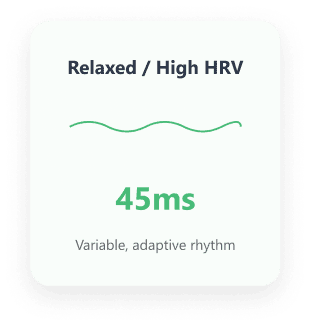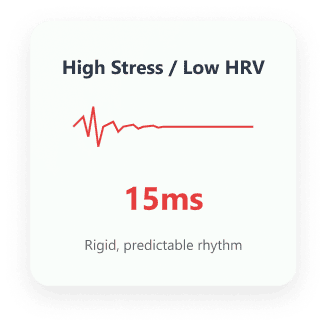Why HRV Predicts Stress Before You Feel It
Your autonomic nervous system—the automatic control system for heart rate, breathing, and stress response—responds to stressors before your conscious mind even recognizes them. HRV reflects this system's balance between sympathetic (fight-or-flight) and parasympathetic (rest-and-digest) activity.
When stress begins building, your sympathetic nervous system activates first, creating more rigid heart rhythms. This happens minutes or even hours before you consciously feel "stressed," giving us a crucial window for early intervention.
Traditional stress management waits until you're already overwhelmed. HRV monitoring catches stress at the physiological level, when intervention is most effective and least disruptive.
Wellobit's approach is built on decades of peer-reviewed research in cardiology, neuroscience, and behavioral psychology.


